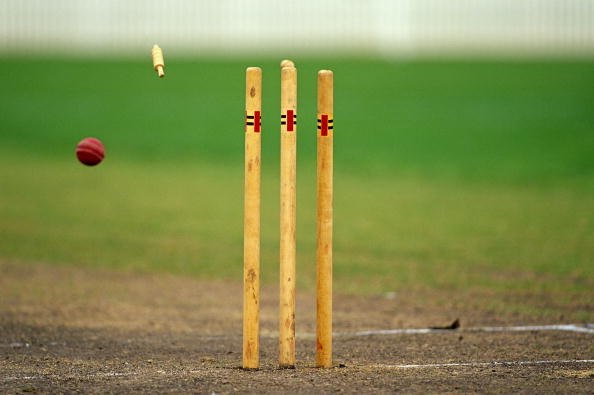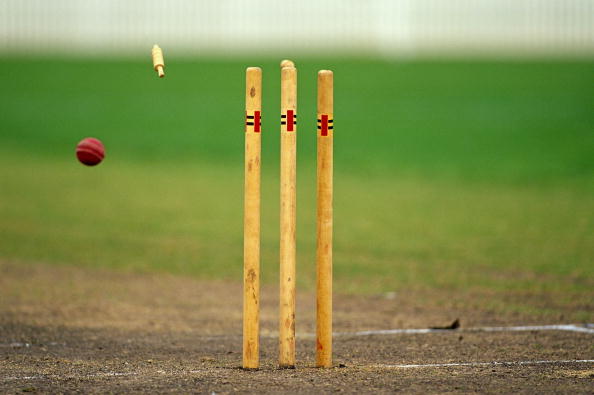Cricket needs a reality check, it cannot have it all
The earth has orbited once more around the sun. Cricket’s County Championship starts again tomorrow (45 per cent chance of rain in Durham at 11am; showers expected shortly after in Hove). We are almost 12 months on from the acknowledgement that English cricket is institutionally racist and appear to be edging closer to an influx [...]


The earth has orbited once more around the sun. Cricket’s County Championship starts again tomorrow (45 per cent chance of rain in Durham at 11am; showers expected shortly after in Hove).
We are almost 12 months on from the acknowledgement that English cricket is institutionally racist and appear to be edging closer to an influx of private equity riches. The sport, though, remains fractured, if not broken.
I spent a chunk of the Easter weekend reading Batting for Time, a peppy account of the state of English county cricket today. Published last week, Ben Bloom’s book made headlines with a quote from the Durham CEO, Tim Bostock, in which he described county members as Luddites – not once, but four times.
Bloom’s account is timely, and very much of this moment. It is a snapshot of the game on the cusp of a potentially revolutionary change in its economics.
A book to read right now, and then again in five or 10 years to marvel at quite how much things have altered, or perhaps boggle at cricket’s inability to seize the opportunity presented by investors intoxicated with the belief that the maths of the IPL can be applied globally – including in the cities of England.
Cricket calendar a mess
This year’s cricket calendar is as much of a mess as last, the Championship making way for The Hundred in August and a slew of meaningless England white-ball matches overlaying the climax of the domestic season in September.
The England and Wales Cricket Board points a finger at the counties for standing in the way of rationalisation; paid-up members, who ultimately control most counties, blame the governing body for the pursuit of greed at the expense of cricket’s domestic heritage.
And yet it is the England team whose commercial success props up the counties, dwarfing the contribution of membership fees.
Bloom references a total of 69,000 full county members in 2022. Almost a quarter of those were in a single county, Surrey. Lord’s has a capacity of 31,180. It fills for internationals but sees a smattering of spectators for Middlesex’s red-ball domestic matches. There were 61,534 at Saturday’s Tottenham v Luton match, the best-attended Premier League game of the weekend.
Top-flight English football is in a league of its own, and probably an unfair comparison. Where other sports have struggled to sustain their leading clubs – think both rugby codes – cricket has used the national team to keep its 18 counties alive in spite of their small paid-up memberships.
County game vs Hundred
The Hundred should be viewed as an attempt to dilute this dependency on the England team. The tragedy is that a worthy objective has been so woefully pursued, pitting county against county and alienating cricket’s hardcore supporters. Emblematic of this is a cameo in Batting for Time starring a cricket lover who takes a traditional scorebook to matches in The Hundred, adapting it to fit the competition’s five-ball stints in place of the traditional six-ball overs.
Over the past year the golden goose England team have played 11 Test matches, winning just four. White-ball cricket has seen a more balanced return, but the competition that mattered – the World Cup in India – was a conspicuous failure.
It is pertinent, then, that the debate about the future of the first class counties revolves in large part around their role in developing cricketers for the national team.
Perhaps in time private owners of franchises in The Hundred will establish glitzy academies in England providing conveyor belts of talent for both the England team and networks of white-ball squads competing in franchise tournaments across the globe.
Words of wisdom
For now, though, the ECB would be wise to avoid any dilution of the county-based pathways that draw promising youngsters into cricket’s infrastructure and nurture them.
The biggest counties – those operating Test grounds and hosting franchises in The Hundred – may believe their own academies are sufficient to fulfil England’s international needs. But their geographic spread is too narrow, even if they do operate out of more densely populated areas.
Concentration of power in the already wealthier counties seems certain to grow, probably substantially.
The ECB should focus on using the arrival of outside investment to ensure that the have-nots, the eight to 10 counties outside the gilded circle, have sufficient resources to deliver vibrant red-ball competition in a second tier of the game, aspire to occasional white-ball cup upsets, and sustain a flourishing local grassroots game capable of developing talented professional cricketers.
I’ve heard all sides of the argument within cricket in recent months. Some deeply entrenched and increasingly bitter. What has struck me is that so many of the protagonists want it all, when the solution is for them to each have their own piece of the action.
No-one need abandon ambition, but all need to embrace reality – and each other – and share the spoils accordingly.
And then there were nine
During the snooze-fest that was the Premier League’s much-hyped goalless draw between Manchester City and Arsenal, my eye kept being drawn to the intrusive digiboards surrounding the pitch. In particular the Sky Sports adverts for the nine golf majors.
Nine? Last time I looked there were four. I know global inflation has been resurgent in recent times, but really? More fool me for such a male-centric interpretation.
The men’s Masters starts next Thursday. The first of the five women’s majors, the Chevron Championship, sees the first golfer tee off a week later at The Woodlands, Texas. The Old Course, St Andrews is last on the women’s majors schedule towards the end of August.
Are you Sure?
City fans unfurled a banner at the Arsenal match protesting at season ticket price hikes. The digiboards told the story of their club today.
I counted 25 ads on rotation including, unsurprisingly, CFD, crypto and betting companies, UAE-focused businesses from telecoms to hotels to real estate, US appliance and water solutions companies, South Korean tyres, a Hong Kong direct marketing business, Japanese beer and cars and an Australian antiperspirant brand called Rexona.
Turns out this last one is owned by Unilever and branded Sure in the UK. But maybe British armpits weren’t the most lucrative target market for the personal goods behemoth on Sunday.
“I am excited to be working with Rexona again especially as it helps brings me and the club closer to home through this global partnership.” Julian Alvarez, Man City forward and Rexona brand ambassador. So that’s clear then.
Ed Warner is chair of GB Wheelchair Rugby and writes his sport column at sportinc.substack.com



